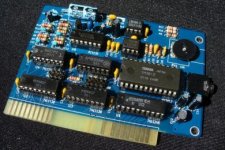eeguru
Veteran Member
I personally hate hearing it when the audio dies down during breaks in game play. I'm sure the original game sound engineer probably hated it too but it was an artifact of most cards. A few beads and caps would eliminate much of what's left, but I suppose it boils down to personal preference.

